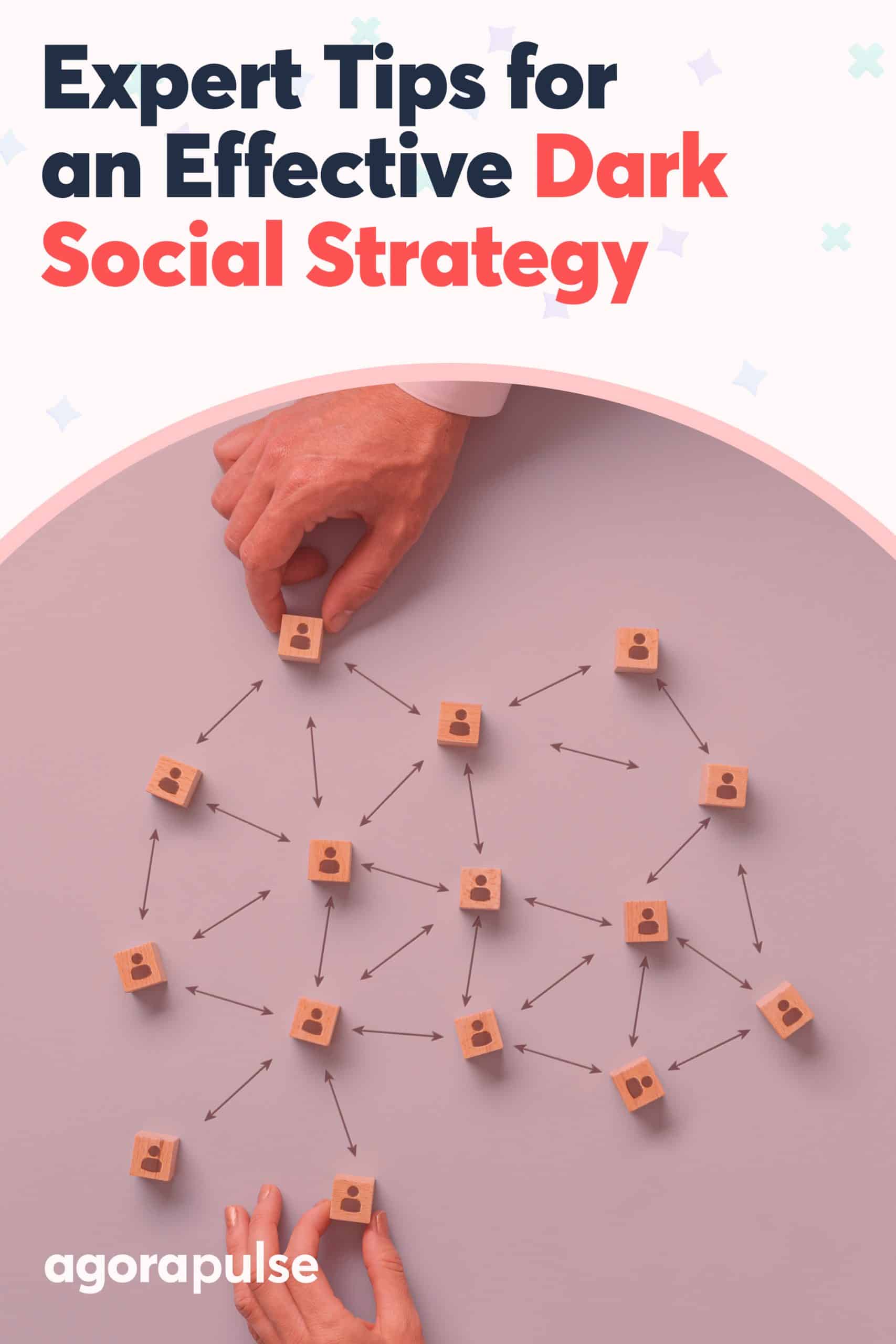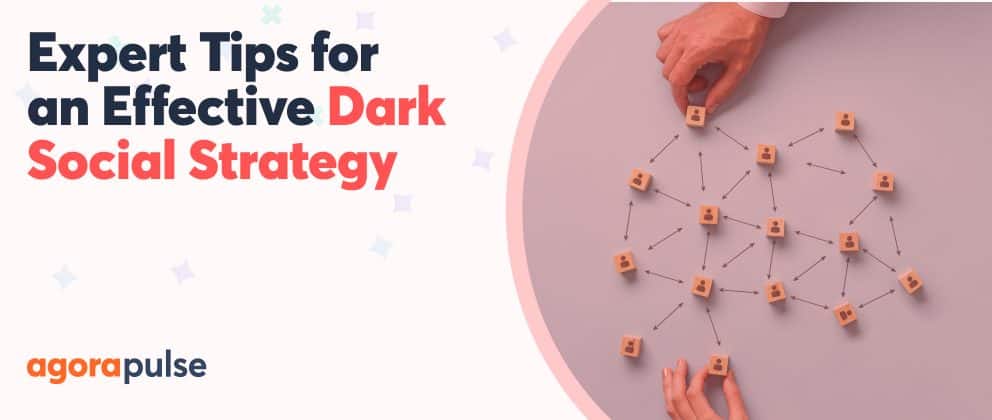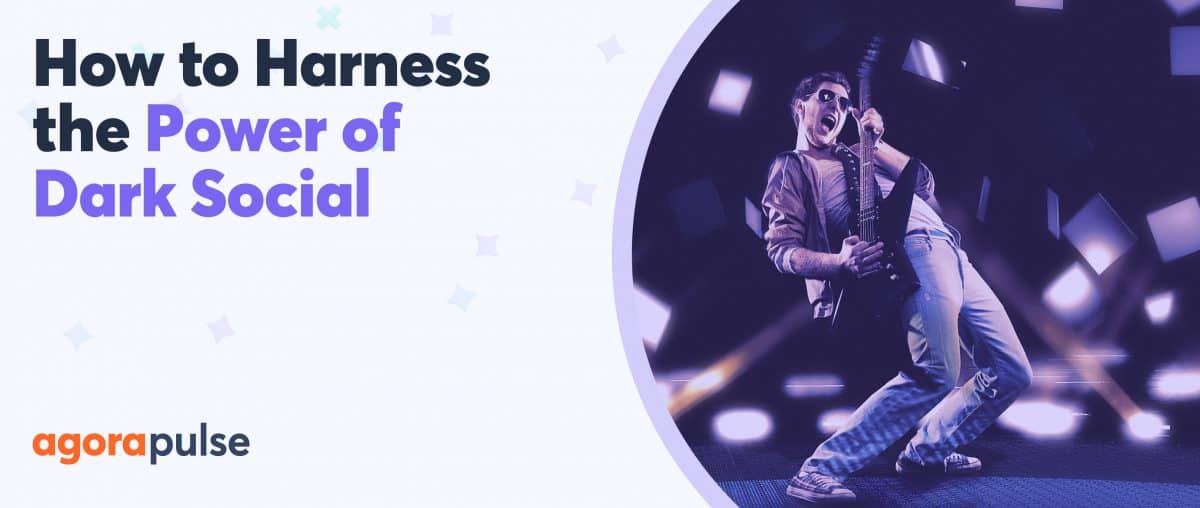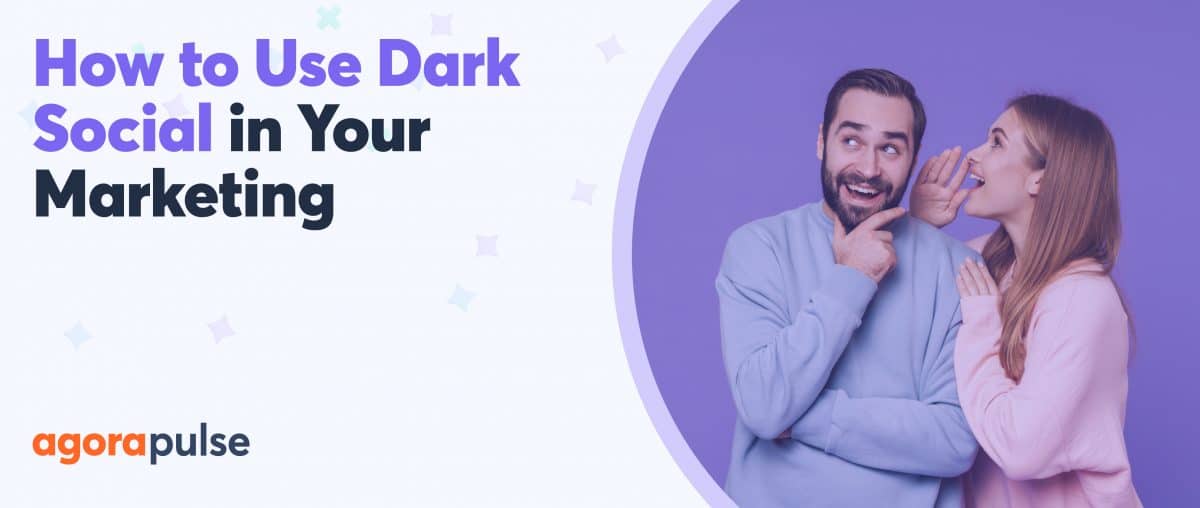Eleven years ago, Alexis Madrigal, senior editor of “The Atlantic” magazine, discovered that 56% of its traffic was coming from unknown private sources—not public platforms like Facebook or Twitter.
He realized that if marketers were only tracking social media engagement, they were only seeing the tiny tip of the iceberg. There was so much more looming underneath that they knew nothing about. Hence the term dark social.
That type of activity can’t be seen.
Dark social is a private communication channel. It involves one-to-one texts, group chats, group texts, and conversations on private social media communities via platforms like Slack, Discord, or Telegram.
“Dark social involves things that are not publicly accessible or indexed by Google. A dark social network is a place that, as marketers, we’re not invited to.” (Christopher Penn, co-founder and Chief Data Scientist at Trust Insights)
When people converse on dark channels, we don’t know what they’re saying. We don’t know what they’re sharing and who they’re sharing it with.
And when those people visit our site, we can’t tell where they’ve come from. We’re completely in the dark about what people are doing when they’re on dark social networks.
That lack of transparency poses a serious problem for us as marketers:
- How can we attribute value to a channel when we can’t monitor, track, or measure it?
- How can we improve performance when we can’t see what is or isn’t working?
- How can we optimize our content or strategies when we don’t know what we’re dealing with?
We’ve recruited four dark social experts to shed some light on this topic and help us understand what dark social means for marketers, why it’s so effective, and how to harness its powers.
Here are tips and tricks about dark social strategy from social media experts Azad Yakatally, Christopher Penn, Jessika Phillips, and Kelly Noble Mirabella.
Dark Social Strategy Tip #1: Don’t invite everyone into your circle
That tip probably goes against every marketing fiber in your body. But to keep your dark social community tight, keep it small and selective. Don’t be afraid to turn people away who aren’t fully committed to your brand.
Remember: We’re talking fine-point paint brushes here, not big, broad paint rollers.
“It’s about creating a space and a sense of belonging where everyone knows about your brand and everyone is committed to it. So don’t invite every man and his dog.” (Jessika Phillips)
Dark Social Strategy Tip #2: Know your North Star
You can’t expect to attract the right type of people, or for people to sing your praises to others, if you don’t know who you are as a brand, at the very core.
Consider:
- What type of experience do you want to give your customers?
- How do you want them to feel when they spend time with you?
- What value do you bring?
- What makes you unique?
- What’s your style?
- How do you want people to talk about you?
- What do you want them to say?
“Whether it’s s’mores around the campfire or it’s more of a learning type of experience, you have to develop a brand personality, make it structurally sound, and know what the North Star of your brand is.
“Everyone that’s then a part of it will be able to articulate that when they’re in conversations with others.
“You’ve created this space where they feel empowered to represent you as the brand.
“Public social is where you’re gonna be talking about it. Dark social is where you’re getting active with it.” (Jessika Phillips)
Dark Social Strategy Tip #3: Make content useful
“Provide value on these channels. You’re not only selling your product, you need to provide value to the people in this community or the people you’re communicating with via one-to-one messaging.” (Azad Yakatally)
Don’t bombard your audience–whether it’s within the community or on private messaging apps–with useless information.
Keep it tight, relevant, and valuable.
“If you’re going to invite people to a private conversation, you’re not just inviting them into your messaging box, you’re asking them to allow us into theirs. It has to be useful.” (Kelly Noble Mirabella)
Save the broad-brush marketing messages for public social channels, and keep the valuable, niche content for your dark social community. They’ll feel special, and privileged, and they’ll continue to want more of it.
“Stop onboarding people with sales pitches and product recommendations. Just be respectful that you have this one-to-one line of communication with them.” (Azad Yakatally)
Dark Social Strategy Tip #4: Less is more
Earlier, we touched on social algorithms and how they’re making it harder to get content out to the right people. But the upside of this is, you can get more content out there without flooding your audience with too many messages.
But with dark social, less is definitely more.
If we’re sending multiple messages a day, we’re going to get blocked or unsubscribed.
“I’ve seen it when people have a webinar coming up. They’ll send a private message reminder three days out, then one the day before, and then three on the day of the webinar, like you would with traditional email marketing. If you do that in Messenger, by the time you get to the most important notification, which is: ‘Hey! We’re live. Come join us!’ people have already tuned out.” (Kelly Noble Mirabella)
Dark Social Strategy Tip #5: Collaborate with micro-influencers
Good influencers are trusted by their fans and followers. They can be a huge asset to any social media marketing strategy, especially a dark social one.
Think about it.
You, as a marketer, post a link to your product or service on public social media. An influencer with a strong, loyal fan base, sends the same link to their followers via Messenger.
Which link is likely to get more click-throughs?
It goes back to what we touched on earlier: trust. You’re more likely to click a link when you know and trust the sender.
Plus, influencers and brand advocates can join communities and naturally sing your praises to other members, without coming across as overly-salesy and inauthentic.
And the best part is, you don’t even need to fork out thousands of dollars to collaborate with big-time influencers with huge social followings. Approach micro-influencers who are more niche and have good engagement rates. Because engagement is what matters, not the number of followers.
Remember: Less is more.
hbspt.forms.create({
region: “na1”,
portalId: “8477337”,
formId: “d7171337-f180-4afb-9fdf-8c08a374f0cc”
});





